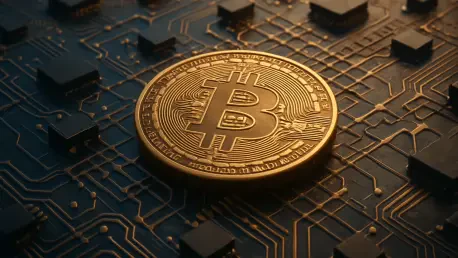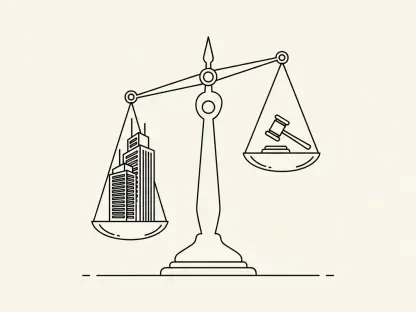Kofi Ndaikate, a well-known figure in the fintech world, brings a deep understanding of blockchain, cryptocurrency, and the intersecting regulatory landscapes. Today, he shares his insights on the significant transition WLFI is undergoing with its latest governance proposal, which involves a shift from a closed system to an open trading model. This move is not just symbolic, coinciding with US Independence Day, but it also marks a critical juncture in decentralization and market transparency.
Can you explain the significance of WLFI launching its governance proposal on July 4th?
Launching the governance proposal on July 4th is quite strategic and symbolic. Independence Day holds a special place being synonymous with freedom and new beginnings. By choosing this day, WLFI is signaling its intention to break away from its previous closed systems and align itself with core democratic values, such as financial independence and market transparency. This timing serves to emphasize the protocol’s dedication to embracing a decentralized model, consonant with the spirit of independence that the day represents.
What are the primary goals of the WLFI governance proposal?
The main objectives of the governance proposal are to initiate a transition from a closed system to an open-participation model. This involves unlocking tokens currently confined within the platform, thereby enabling them to be tradable across decentralized exchanges. By facilitating peer-to-peer trading and price discovery, the goal is to create a more dynamic and inclusive environment that allows for broader utility and greater stakeholder engagement in governance decisions, such as determining emissions schedules and managing treasury operations.
Why is decentralization crucial for WLFI at this point?
Decentralization is key for WLFI right now as it seeks to reduce mounting regulatory scrutiny, especially given the concerns about the Trump family’s involvement. By spreading out governance and limiting single-party control, WLFI can make strides towards meeting new US digital asset platform standards. This transition not only aims to enhance compliance with increasing regulatory demands but also fortifies the protocol against potential political pressures, providing a more secure and community-driven structure.
Why did the Trump family decide to reduce its stake in WLFI from 75% to 55%?
The reduction in ownership is a deliberate move aimed at alleviating political and ethical concerns surrounding the Trump family’s ties to crypto, as raised by several Democratic critiques. This strategic divestment helps to distance WLFI from direct political entanglements, which, in turn, supports the push towards a more decentralized and less politically fraught governance model. Doing so not only mitigates the appearance of conflicts of interest but also aligns with broader decentralization goals.
How does the WLFI team link their initiative to the ideals of financial independence and market transparency?
The WLFI team draws a clear connection between their decentralization initiative and the ideals of financial independence by promoting a governance model that democratizes decision-making and encourages greater participation from stakeholders. Market transparency is furthered through open trading and price discovery processes, which can only thrive in a decentralized environment where users have consistent, reliable access to market information and decision-making channels, thus embodying these enduring ideals.
What role does the Best Wallet play in WLFI’s transition to open governance and token tradability?
Best Wallet is pivotal in facilitating this transition by providing users with a secure and efficient platform to manage their WLFI tokens. With its capabilities to handle governance tokens and multichain assets, Best Wallet acts as a bridge that eases the process for investors moving from a closed to an open model. Notably, $BEST token holders gain unique benefits like reduced transaction fees and early access to listings, which supports stakeholders during this crucial transformation phase.
How might WLFI’s move toward a decentralized governance model enhance its legitimacy among institutional players?
A decentralized governance model can significantly bolster WLFI’s legitimacy because it demonstrates a commitment to compliance and reducing the risk of centralized control—concerns that are especially prominent among institutional investors. This structure aligns with regulatory expectations and shows a reduction in individual influence, making WLFI more attractive from a risk management perspective and potentially opening doors to partnerships with institutional players looking for assured stability and regulatory alignment.
Can you discuss any potential challenges WLFI might face in moving toward an open-participation model?
Transitioning to an open-participation model poses several challenges, including managing the complexity of governance decisions when power is distributed among a broader audience. There’s also the task of ensuring that stakeholders are sufficiently informed and engaged to make effective decisions. Technical hurdles in scaling the platform to support a much larger, active user base while maintaining security and performance are also considerations that must be addressed.
What impact do you foresee on WLFI and its stakeholders if this proposal is passed?
Should this proposal pass, it would likely lead to increased engagement and diversity of ideas within WLFI, enhancing innovation and growth potential. Stakeholders would benefit from a more transparent and open market, allowing them greater control over their assets and governance participation. However, it also demands active participation and accountability from all parties, fostering a more robust and resilient ecosystem overall.
How does the governance proposal align with WLFI’s roadmap and future goals?
The governance proposal is a cornerstone of WLFI’s roadmap, underpinning its future goals of decentralization, regulatory compliance, and market expansion. By shifting to an open governance model, WLFI positions itself for long-term sustainability and aligns with its vision of fostering an inclusive financial ecosystem that prioritizes transparency and stakeholder empowerment.
What is your forecast for the future of decentralized finance, particularly in relation to protocols like WLFI?
The future of decentralized finance, especially for protocols like WLFI, appears promising as they align more closely with regulatory frameworks and consumer demand for transparency. As blockchain technology evolves, we can expect greater integration with traditional financial systems, increased adoption of decentralized governance models, and deeper collaboration with institutional players. Ultimately, DeFi’s potential to democratize finance seems boundless, poised to redefine global financial landscapes.









